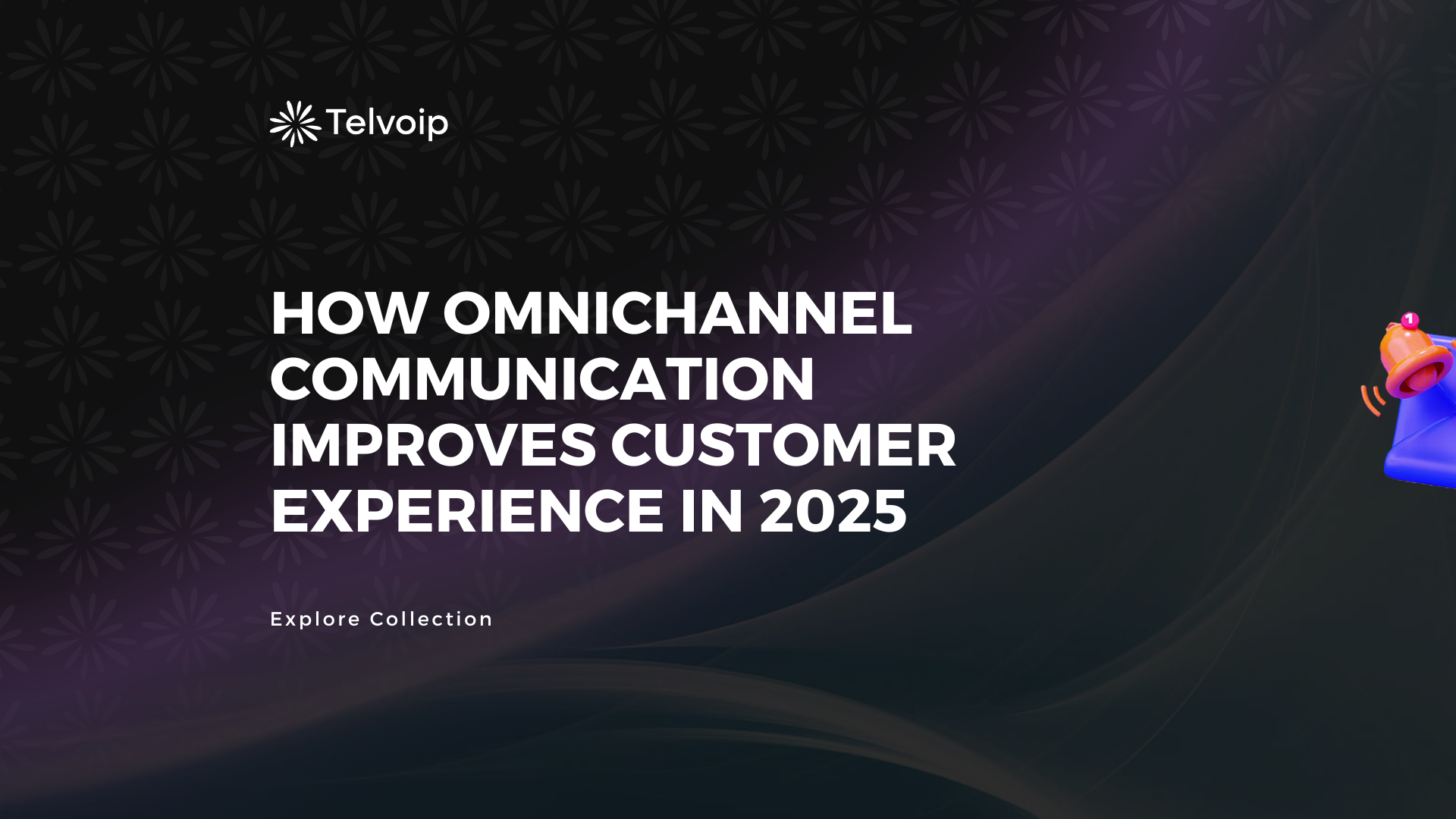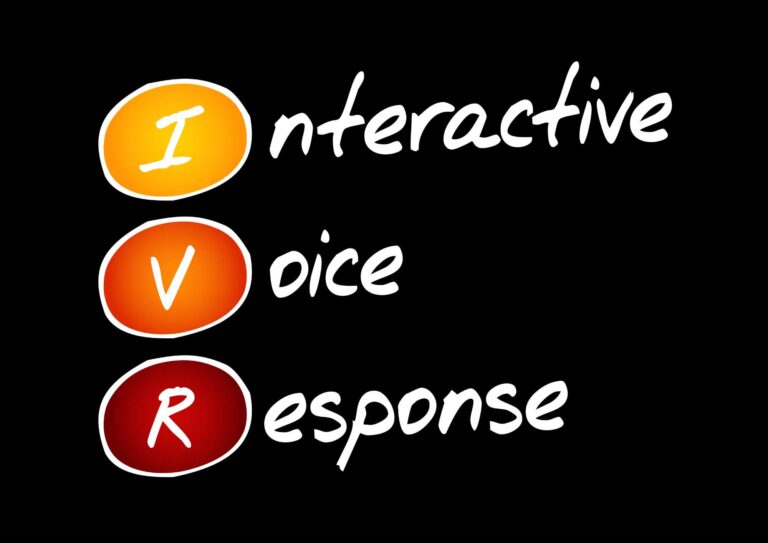Table of Contents
ToggleIntroduction
In 2025, the B2B landscape is defined by heightened customer expectations, rapid technological advancement, and the need for brands to deliver seamless, personalized experiences at every touchpoint. Omnichannel communication has emerged as a critical strategy for businesses aiming to elevate customer experience, drive loyalty, and stay competitive in today’s fast-paced digital economy.
In this Blog post, we will explore the ways businesses can improve their omnichannel strategies to remain competitive, effective, and sufficient
What Is Omnichannel Communication?
Omnichannel communication refers to integrating and synchronizing various customer interaction channels such as email, social media, live chat, phone, SMS, in-app messaging, and more into a cohesive system. Unlike multichannel communication, which operates in silos, omnichannel communication ensures a unified and consistent experience regardless of where or how the customer engages. It enables customers to move effortlessly between channels, with their data and preferences following them, ensuring continuity and personalization at every stage
For VoIP service providers, this means that sales reps, support teams, and account managers all have access to the same customer data and conversation history, enabling them to respond more intelligently and efficiently.
Why Omnichannel Matters in 2025
Rapid technological innovation, rising customer expectations, and the normalization of remote-first communication will shape the business landscape in 2025.
In this environment, omnichannel communication has emerged as a strategic imperative for businesses seeking to differentiate themselves, increase retention, and drive long-term value. Here’s why:
- Customer Expectations for Personalization and Immediacy: Modern B2B clients expect the same speed and personalization as B2C consumers. They want instant access to support, tailored recommendations, and seamless transitions between communication methods, all of which omnichannel platforms enable.
- Remote and Hybrid Work Models: With distributed workforces now the norm, businesses depend on VoIP solutions for internal and external communication. Omnichannel support ensures they can get help or information from any location, on any device, at any time.
- AI and Data Integration: Omnichannel systems are powered by advanced data analytics and AI, enabling predictive insights, intelligent routing, and automation. This leads to faster resolutions, reduced churn, and proactive customer engagement.
- Global Markets and 24/7 Demands: As businesses cater to international clients, support teams must be able to handle multilingual, round-the-clock interactions. Omnichannel tools help meet these demands with scalable, localized support options and AI translation.
- Unified Brand Experience: Consistency across communication channels enhances brand trust. Whether a client engages via chat, email, or voice, they should receive coherent messaging and service quality. Omnichannel strategies ensure brand integrity throughout the customer journey.
- Increased Operational Efficiency: Centralizing communication allows businesses to streamline workflows, minimize redundancies, and improve cross-functional collaboration. Agents spend less time switching between tools and more time delivering value.
Ultimately, omnichannel communication allows businesses to anticipate customer needs, deliver timely solutions, and create frictionless interactions that foster loyalty and long-term partnerships.

7 Key Ways Omnichannel Communication Improves Customer Experience
- Seamless Engagement Across Touchpoints
An omnichannel strategy ensures that customers experience a smooth journey from discovery to technical support. For example, a customer might start with a chatbot on your website, continue the conversation via email, and finalize their plan upgrade over a phone call, all without having to repeat their issue or reintroduce themselves.
- Faster Issue Resolution and Support
With all communication channels integrated into a single platform, business support teams can access complete customer histories, allowing them to resolve issues faster and more accurately. Smart routing and AI-powered chatbots can handle common troubleshooting tasks, freeing up human agents to focus on more complex issues.
- Personalized and Predictive Interactions
By unifying customer data across all channels, businesses can deliver hyper-personalized experiences. For instance, if a business client browses a specific VoIP feature and later calls support, the rep can tailor the conversation based on the client’s previous behavior and needs. AI tools can even anticipate when a customer might need to upgrade bandwidth or add extensions.
- Improved Trust and Loyalty
Consistency and responsiveness build trust. When customers feel understood and supported at every step, they are more likely to stay loyal, provide positive feedback, and refer others. In 2025, customer experience is a key differentiator, and omnichannel communication is at its core.
Real-World Applications and Use Cases in the VoIP Industry
- Hosted VoIP Providers use omnichannel platforms to streamline customer onboarding, training, and support.
- Enterprise VoIP Solutions integrate CRM data with communication tools to deliver a 360-degree view of client interactions.
- Unified Communications as a Service (UCaaS) vendors offer seamless transitions between chat, video, and voice channels.
- Enhanced Data Collection and Insights
Omnichannel systems capture valuable data about customer behaviors and preferences across all channels. This holistic view enables businesses to anticipate needs, refine offerings, and deliver proactive, personalized experiences that foster long-term relationships.
- Building Trust With Transparency and Privacy
With growing concerns around data privacy, omnichannel platforms in 2025 will prioritize secure data practices and transparent communication. This reassures customers and strengthens brand loyalty in a regulatory-driven environment.
- Competitive Advantage and Revenue Growth
Businesses that deliver seamless omnichannel experiences stand out in a crowded market. Satisfied customers are more likely to become repeat buyers and advocates, directly impacting retention rates and revenue growth. Campaigns using three or more channels can see purchase rates soar by up to 287% compared to single-channel efforts

How to Implement Omnichannel Communication in Your Business
- Audit Existing Channels: Begin by mapping every current customer interaction point, such as phone, email, chat, in-app support, social media, and IVR systems. Identify which channels are siloed, underutilized, or inconsistent in tone and support. This audit will help you determine where to integrate or upgrade to ensure a seamless experience.
- Invest in the Right Technology: Choose an omnichannel communication platform that integrates with your CRM, support tools, and analytics systems. In any sector of business, your chosen solution must support real-time voice, video, and messaging with end-to-end encryption, QoS monitoring, and interoperability with existing infrastructure.
- Unify Customer Data: Centralize customer interaction history and preferences using a cloud-based database or CRM. This allows agents to access full context when engaging with clients, ensuring continuity and reducing frustration.
- Train Teams: Educate support staff, sales teams, and technical agents on how to use the integrated platform, interpret customer data, and provide consistent service across channels. Training should also focus on soft skills such as empathetic communication and active listening.
- Develop Channel-Specific Playbooks: Create documented workflows for handling common customer issues across each channel. These playbooks should outline expected response times, escalation procedures, and key messaging strategies.
- Start Small and Scale: Begin by rolling out your omnichannel solution with a specific customer segment or product line. Monitor adoption, collect customer feedback, and make iterative improvements. As confidence and success grow, expand the system to other departments and audiences.
- Continuously Optimize: Use insights from analytics to adjust staffing, improve support content, and refine channel strategies. For example, if live chat handles high volumes but delivers low resolution rates, invest in chatbot support or additional training.
By following these steps, businesses can build an agile, customer-centric communication framework that enhances satisfaction and drives growth.

Measuring Omnichannel Success
To gauge the impact of your omnichannel strategy, it’s essential to track both qualitative and quantitative key performance indicators (KPIs) that reflect customer satisfaction, engagement, and operational efficiency.
Key Metrics to Monitor:
- Net Promoter Score (NPS): Measures customer loyalty by asking how likely they are to recommend your business to others. A higher NPS indicates strong customer advocacy.
- Customer Satisfaction Score (CSAT): Captures immediate customer feedback after interactions, providing insight into how well each touchpoint is performing.
- First Contact Resolution (FCR): Tracks the percentage of customer issues resolved in a single interaction, a critical measure for technical support efficiency.
- Customer Lifetime Value (CLV): Calculates the total value a customer brings over their relationship with your company. An increasing CLV suggests effective retention and upselling.
- Channel Response Time: Measures how quickly your team responds to inquiries on each channel (chat, email, voice, etc.). Delays can impact the perceived quality of your service.
Additional Insights to Consider:
- Customer Journey Analytics: Evaluate drop-off points, time spent across channels, and transitions between touchpoints to optimize engagement.
- Churn Rate: Monitor how often customers leave and identify common patterns or channel experiences that may contribute to attrition.
- Resolution Time by Channel: Compare the speed and effectiveness of issue resolution on different platforms (e.g., voice vs. live chat).
- Self-Service Usage Rates: Track how often customers use your knowledge base, FAQs, or IVR systems, and whether these tools reduce support volume.
By combining these metrics with regular customer feedback and behavioral data, businesses can fine-tune their omnichannel strategies to deliver faster, more relevant, and more satisfying customer experiences. Use A/B testing and feedback loops to experiment with new communication features and continuously adapt to evolving customer needs.
2025 Omnichannel Trends Shaping Customer Experience
| Trends | Impact on Customer Experience |
| AI-Powered Personalization | Delivers relevant, real-time content and offers across channels |
| Voice & Visual Search | Enables hands-free, intuitive interactions and purchases |
| Immersive Technologies | AR/VR creates an engaging, interactive product experience |
| Unified Brand Experience | Ensures seamless transitions and consistent messaging |
| Data Privacy & Transparency | Builds trust and meets evolving regulatory standards |
How TelVoIP Is Helping Businesses Succeed with Omnichannel Communication
TelVoIP is at the forefront of transforming how VoIP service providers deliver customer experiences. By offering a robust suite of cloud-based communication tools, TelVoIP enables businesses to unify voice, video, chat, SMS, and email into a single, intuitive platform.
Key ways TelVoIP is driving omnichannel success:
- Centralized Communication Dashboard: Businesses can manage all interactions from one place, providing agents with full visibility into the customer journey.
- Smart Routing and AI Assistance: TelVoIP’s intelligent call and message routing ensures that customer inquiries are directed to the right agents quickly, reducing wait times and improving satisfaction.
- Real-Time Analytics and Reporting: With powerful analytics, TelVoIP allows teams to track KPIs like response times, resolution rates, and customer satisfaction in real time.
- Custom Integrations: TelVoIP seamlessly integrates with popular CRMs, helpdesk systems, and collaboration tools, ensuring consistency across all customer-facing departments.
- Secure and Scalable Infrastructure: Built for reliability, TelVoIP ensures secure communications for businesses of all sizes, with the flexibility to scale as customer demand grows.
By leveraging TelVoIP’s omnichannel communication capabilities, businesses are improving customer retention, reducing operational friction, and standing out in an increasingly competitive VoIP market.
Conclusion
In 2025, omnichannel communication is not just a trend, it’s a necessity for B2B organizations aiming to deliver exceptional customer experiences. Businesses that embrace a connected, data-driven approach to customer engagement will not only meet but exceed rising expectations. By delivering seamless, personalized, and proactive experiences across all channels, you can build trust, deepen relationships, and drive long-term business growth.
By meeting customers where they are, providing consistent and personalized interactions, and leveraging the latest technologies, businesses can boost satisfaction, loyalty, and revenue in an increasingly competitive market. So, start building your omnichannel communication strategy today and stay in the competitive age of modern-day technology-driven business economy








